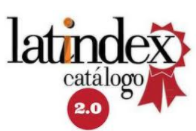Argentinean Non-Tariff Barriers in MERCOSUR:
Regulations and Politics in Trade Conflicts
DOI:
https://doi.org/10.35305/cc.vi120.75Keywords:
MERCOSUR, non-tariff barriers, ArgentinaAbstract
This article deals with non-tariff barriers as a permanent problem in MERCOSUR. First, it analyses the international definition of “barriers”, which creates difficulties to identify them and generates discussions on their legitimacy. It shows that MERCOSUR regulations faced also both problems. Second, the article addresses the main conflicts emerged from non-tariff barriers imposed by Argentina against Brazilian imports. It demonstrates that MERCOSUR regulations early defined non-tariff barriers as illegitimate instruments in the integration process, but because of the lack of effective regional mechanisms to deal with them, they became ordinary. The dissatisfaction of different agents with the performance of the consultative mechanisms and the regional court had as a consequence a bilateral approach to trade conflicts, perpetuating the relation among weak regional regulations and preferences of national leaders for political negotiations as a vicious cycle.
Downloads
Downloads
Published
How to Cite
Issue
Section
License

This work is licensed under a Creative Commons Attribution-ShareAlike 4.0 International License.
Aquellos autores/as que tengan publicaciones con esta revista, aceptan los términos siguientes:
- Los autores/as conservarán sus derechos de autor y garantizarán a la revista el derecho de primera publicación de su obra, el cuál estará simultáneamente sujeto a la Licencia Creative Commons Reconocimiento-NoComercial-CompartirIgual 4.0.
- Los autores/as podrán adoptar otros acuerdos de licencia no exclusiva de distribución de la versión de la obra publicada (p. ej.: depositarla en un archivo telemático institucional o publicarla en un volumen monográfico) siempre que se indique la publicación inicial en esta revista.
- Se permite y recomienda a los autores/as difundir su obra a través de Internet (p. ej.: en archivos telemáticos institucionales o en su página web) antes y durante el proceso de envío, lo cual puede producir intercambios interesantes y aumentar las citas de la obra publicada.
















